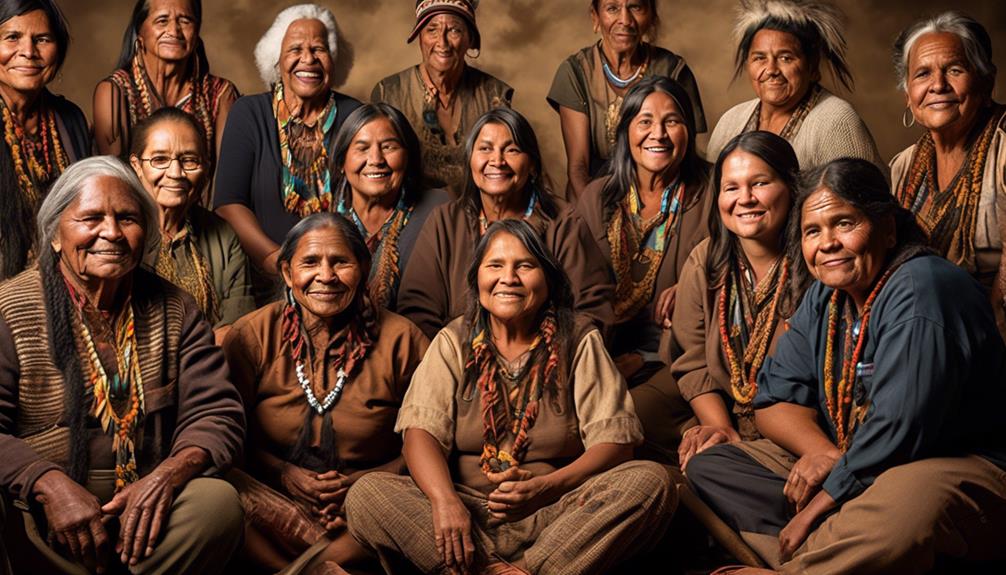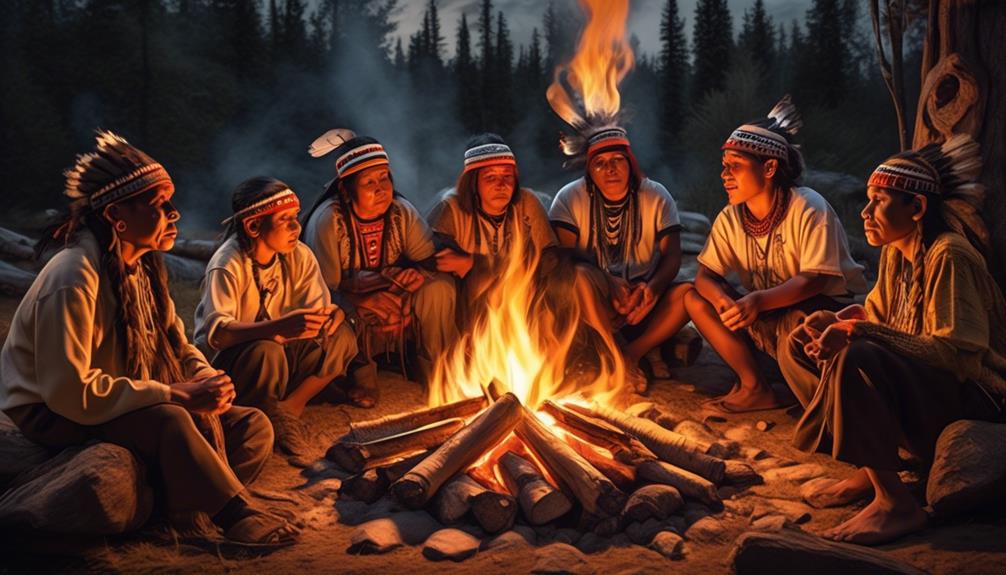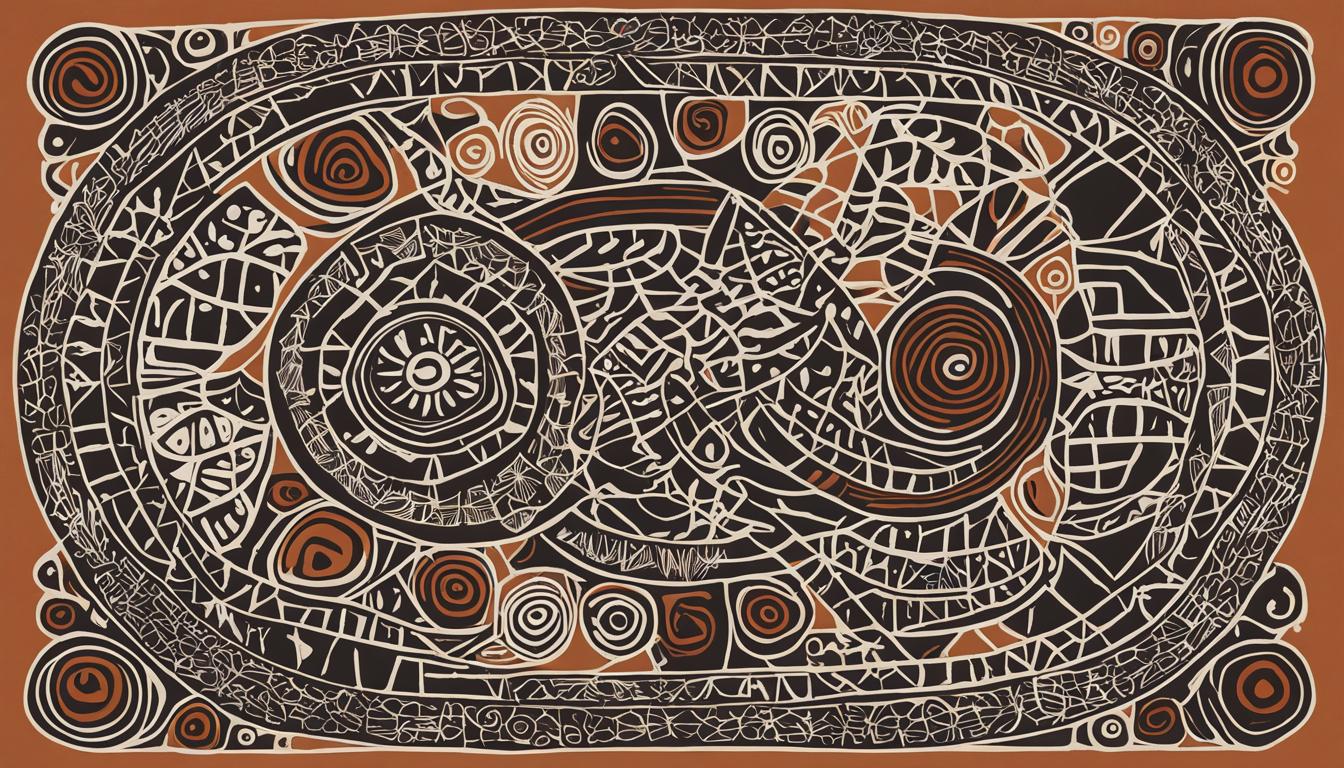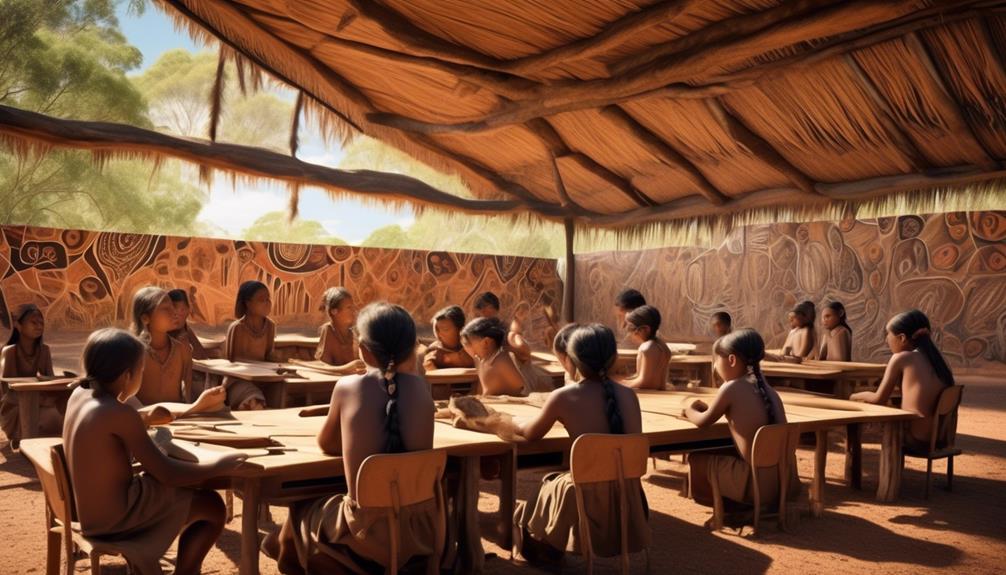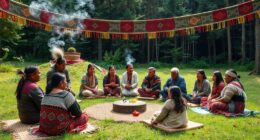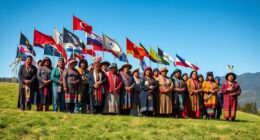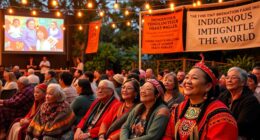Do you think learning a new language is hard? Imagine the immense challenge of preserving an indigenous language on the brink of extinction. This effort is more than just difficult; it is a crucial mission driven by Indigenous Australian language experts.
The journey of these language workers is a testament to resilience, perseverance, and the profound significance of linguistic diversity. As we navigate through the complexities and triumphs of their efforts, we gain insight into the multifaceted strategies and collaborative endeavors that are shaping the future of Indigenous Australian languages.
But what are the specific skills and approaches necessary for this monumental task? Stay tuned to uncover the transformative journey of Indigenous Australian language workers and the invaluable lessons they offer for language preservation.
Key Takeaways
- Aboriginal languages are repositories of cultural knowledge, traditions, and identity for First Nations peoples.
- Historical policies and forced assimilation have contributed to the decline of Aboriginal languages.
- Limited resources and intergenerational language transmission pose challenges to language revitalization.
- Language preservation is rooted in community-led initiatives and partnerships with educators and elders.
Historical Context of Indigenous Australian Languages
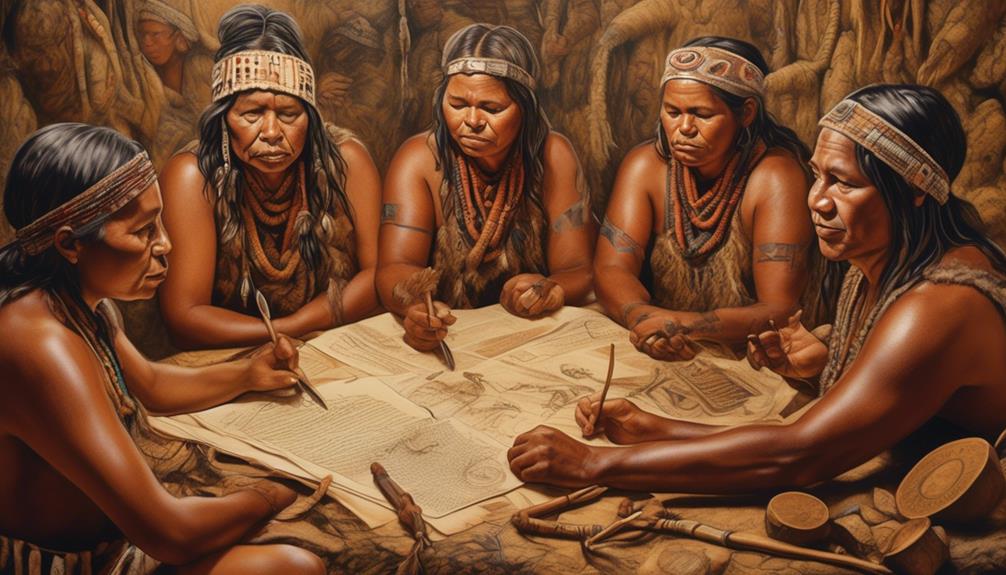
The historical significance of Aboriginal languages in Australia's cultural heritage can't be overstated. These languages aren't just a means of communication; they're repositories of cultural knowledge, traditions, and identity for First Nations peoples.
However, historical policies and forced assimilation have significantly contributed to the decline of Aboriginal languages. This has had a profound impact on Indigenous communities and their sense of self-determination. The loss of language has severed connections to traditional practices and spiritual beliefs, leading to a decline in overall well-being.
Despite this, there's a growing movement towards language revival, driven by the recognition of the vital link between Indigenous languages and the cultural and social vitality of First Nations peoples. Collaboration between Indigenous communities, linguists, and educational institutions is playing a pivotal role in this revitalization effort, empowering language speakers to reclaim and preserve their linguistic heritage.
The reclaiming of Indigenous languages isn't just about words; it's about reclaiming pride, resilience, and the right to uphold one's cultural legacy.
Challenges Faced by Language Workers
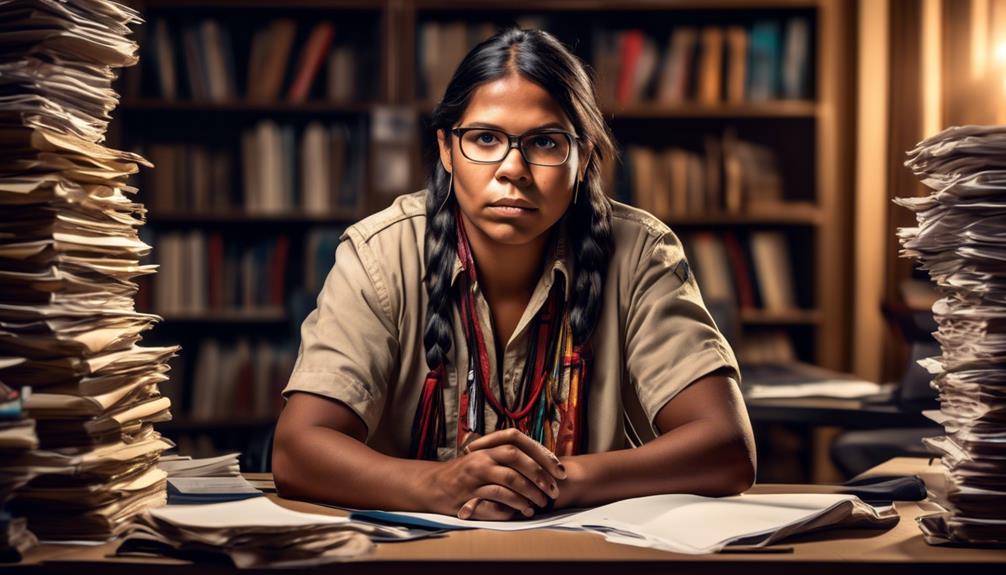
Facing the challenges of limited resources and intergenerational language transmission, we engage in the crucial work of revitalizing Indigenous Australian languages. The scarcity of funding and resources presents a significant obstacle to our efforts in preserving Aboriginal languages. Without adequate support, it becomes increasingly challenging to develop and implement effective language revitalization programs. Additionally, the limited number of fluent speakers and the lack of intergenerational transmission further compound the difficulties faced by language workers. The historical policies of forced assimilation have also played a detrimental role in the decline of Indigenous languages, making the task of language preservation even more daunting.
Collaboration between Indigenous communities, linguists, and educational institutions is essential to address these challenges and ensure the successful revitalization of Aboriginal languages. However, the urgency of the situation is undeniable, as many Indigenous languages are endangered or have already become extinct. As language workers, our commitment to preserving Indigenous languages is driven by the desire to safeguard the cultural heritage and knowledge passed down through generations for the benefit of future generations. The challenges we confront underscore the pressing need for sustained support and collaborative efforts in the vital work of Aboriginal language preservation.
Strategies for Language Preservation
Collaborating with Indigenous communities and linguists, we implement innovative strategies to preserve and revitalize Aboriginal languages, ensuring the transmission of cultural knowledge and identity.
Our approach to language preservation is rooted in community-led initiatives and partnerships with educators and elders.
To engage the audience, we focus on two key strategies:
- Bilingual Education Programs
- Collaborate with Indigenous educators to integrate Aboriginal languages into mainstream education curricula.
- Empower Indigenous youth to become language advocates and ambassadors within their communities.
- Community-Led Language Revitalization
- Work closely with elders to document traditional knowledge and oral histories in Aboriginal languages.
- Support the creation of language nests and immersion programs to foster intergenerational language transmission.
Impact and Benefits of Language Revitalization
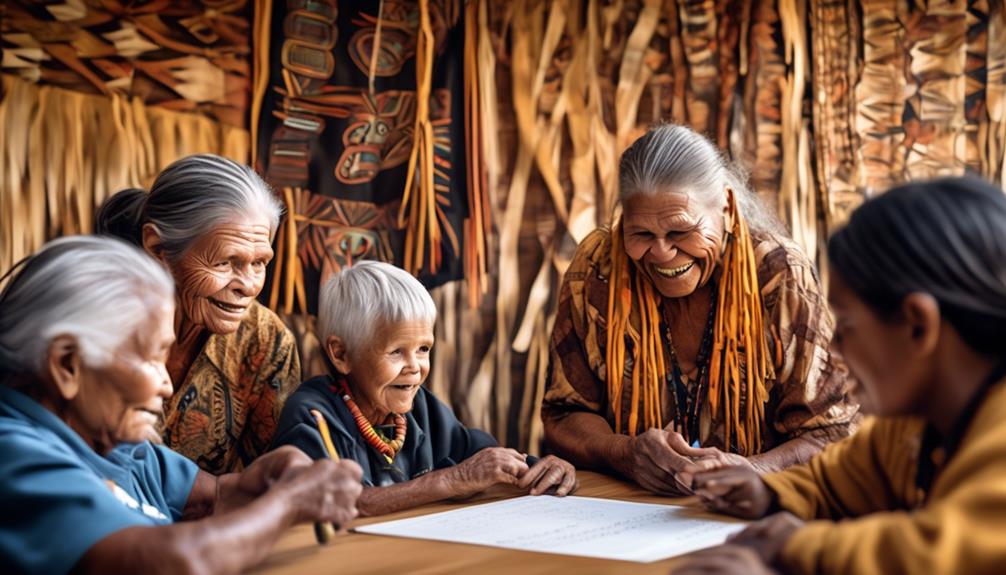
How does the revival of Aboriginal languages impact the well-being and self-determination of Indigenous communities? The impact of language revitalization extends far beyond the preservation of words and grammar. It directly influences the overall health and empowerment of Indigenous peoples. When Indigenous languages are revitalized, there is a profound sense of cultural pride and identity that emerges within the community. This revitalization supports the mental, emotional, and spiritual well-being of individuals, helping to heal historical trauma and strengthen community bonds. Furthermore, the revival of Aboriginal languages contributes to the self-determination of Indigenous communities, enabling them to assert their cultural autonomy and sovereignty.
| Impact | Benefits | Language Revitalization |
|---|---|---|
| Cultural Pride | Healing historical trauma | Preservation of traditional knowledge |
| Identity | Strengthening community bonds | Empowerment of Indigenous communities |
| Autonomy | Mental, emotional, and spiritual well-being | Assertion of cultural autonomy |
The impact and benefits of language revitalization are profound and multifaceted. By prioritizing the preservation and revival of Indigenous languages, we are not only honoring the cultural heritage of First Nations peoples but also fostering their overall well-being and self-determination.
Resources and Support for Language Workers
We actively seek out community-led language revitalization programs and initiatives to provide essential support and guidance for language workers. By engaging with these programs, we can access valuable resources and expertise to aid in our language preservation efforts.
In addition to community-led initiatives, we also utilize technology, such as language apps and online resources, to support our language learning and preservation endeavors. These tools enable us to reach a wider audience and facilitate the accessibility of Indigenous Australian languages.
Furthermore, we collaborate with linguists, educators, and Indigenous communities to gain valuable insights and expertise in language preservation and revival. Their support and guidance are instrumental in our efforts to sustain and revitalize endangered languages.
Moreover, we actively seek government support and recognition, as these are essential for sustaining language revitalization efforts. By seeking out available resources and funding opportunities, we can ensure the longevity of our language preservation initiatives.
Documenting and recording endangered languages are also crucial aspects of our efforts to preserve and revitalize Aboriginal languages, and we're dedicated to this important work.
Frequently Asked Questions
Why It Has Been Difficult to Retain Aboriginal Languages in Australia?
It's been tough to retain Aboriginal languages in Australia due to a range of challenges.
Government policies like cultural assimilation and limited support have hindered preservation efforts. The education system hasn't prioritized Indigenous languages, leading to a lack of intergenerational transmission.
However, community engagement and collaboration between Indigenous communities, linguists, and educational institutions are crucial for language revitalization. These efforts aim to address the historical and systemic barriers to preserving Aboriginal languages.
What Is Being Done to Preserve Indigenous Languages?
We're actively engaging in language revitalization through community-driven initiatives. By integrating technology and honoring storytelling traditions, we're preserving Indigenous languages.
Educational programs are crucial, and collaboration between communities, linguists, and institutions is key.
Symbolically, we're sowing seeds of cultural preservation, nurturing our languages with care.
Together, we're building a future where our languages thrive, ensuring the rich tapestry of Indigenous voices endures for generations to come.
Why the Preservation of Indigenous Culture Including Language Is Important?
Preserving Indigenous culture, including language, is crucial for maintaining cultural identity, connection, and revitalization across generations. It fosters empowerment, oral tradition, and education while promoting linguistic diversity.
Community support is essential in this endeavor, as it contributes to the overall well-being of Indigenous communities. By preserving Indigenous languages, we honor traditional knowledge and stories, combat the loss of cultural traditions, and promote cultural diversity and understanding.
Why Is It Important to Preserve the Aboriginal Language?
Preserving Aboriginal languages is crucial for maintaining our cultural identity, strengthening community connection, and preserving linguistic diversity.
It's essential for passing down our oral tradition and ensuring that educational resources reflect our heritage.
Reviving and preserving our languages empowers our communities and contributes to our overall well-being and self-determination.
Understanding Aboriginal languages enables a deeper appreciation of our profound connection to the land.
Conclusion
As language workers, we've embarked on a journey to breathe life back into our Indigenous Australian languages. Like gardeners tending to delicate, rare flowers, we nurture and protect our languages from extinction.
Despite the challenges, we've developed strategies and found support to ensure the survival of our linguistic heritage.
The impact of language revitalization is like a colorful tapestry, weaving together our cultural identity and well-being, enriching the fabric of our communities for generations to come.
Mary is a passionate writer who brings creativity and a fresh perspective to our team. Her words have the power to captivate and inspire, making her an essential contributor to our content. Mary’s commitment to storytelling and dedication to promoting Indigenous culture ensures that her work touches the hearts of our readers. We’re fortunate to have her as part of our team.
